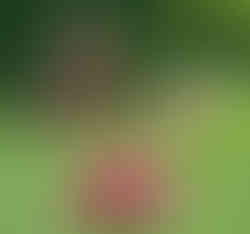Legends of the Fall
- Thomas Cagney
- Nov 11, 2020
- 2 min read
Updated: Dec 1, 2020
Observant homeowners enjoy a front-row seat to the seasonal cycles of the wildlife living in their yard. Spring marks the return of migratory birds and insects and the beginning of the mating season. Summer brings chicks and caterpillars and the peak of pollinator season. Fall is a time of preparation for the hardships of winter.
The photos below were taken in my yard in early to mid-fall. They celebrate the feeding frenzy of autumn. Throughout fall, birds store calories for a long migration or a harsh winter, while bees and butterflies enjoy late-season blooming flowers before migration or hibernation.
Autumn is a busy time for wildlife and a pleasure to behold!
Insects
First row: Cloudless Sulphur and European Honeybee feed on late-blooming New England Aster
Second Row: A Tiger Swallowtail feeds on Tiger Lillies while a European Mantis lurks below.
Third Row: A Saddleback Caterpillar feeds on Tiger Lily, Spicebush Swallowtail feeds on Zinnias.
Fourth Row: A Painted Lady feeds on Zinnias. A Potter Bee feeds on Bee Balm
About the flowers in this gallery
New England Aster is a beautiful fall-blooming perennial that offers pollinators and a late-season energy jolt.
The productivity of Tiger Lily flowers in my yard has been impressive. Hummingbirds, bees, and butterflies feed on their flowers. When shopping, search for the native Tiger Lily.
Zinnias are an annual cut flower, among the most visited flowers in the pollinator garden. Collect seeds in the fall and replant in the spring.
Bee Balm is a perennial North American native. Highly recommended for pollinator gardens!
Birds
First row: Male Red-Bellied Woodpecker and a Female Red-bellied Woodpecker await their turn at the feeder.
Second Row: Male Downy Woodpeckers at the suet feeder
Third Row: Young House Wren and parent with prey
Fourth Row: Tufted Titmouse- a frequent visitor to the feeder!
About the birds in this gallery:
Red-Bellied Woodpecker: Males- head features bright red coloring. Females have less pronounced red coloring. Will announce its arrival to the feeder with several minutes of vocalizations. Enjoys sunflower seeds, fruit, and nut mixes at the feeder. Add suet feeder in the fall/winter months.
Downy Woodpecker: North America's smallest woodpecker and a frequent visitor to my feeders. Males feature bright red coloring on the back of their heads. Females do not have red coloring. Enjoys sunflower seeds, fruit, and nut mixes at the feeder. Add suet feeder in the fall/winter months.
-Note: For a fascinating discussion on woodpeckers, enjoy this episode of the
Margaret Roach podcast of A Way to Garden with Stephen Shunk, author of Peterson
Guide to Woodpeckers,
House Wren: Our most musical bird- During the mating season, the male has 40 love songs in his playlist! Gardeners will appreciate their voracious appetite for insects. This summer, I observed the parents feeding their nestlings at 15 minutes intervals for the entire day.
Tufted Titmouse: Expect feeder visits throughout the winter. The tufted titmouse can raise or lower its crest. Looks like Billy Idol with its crest raised.

All photos were taken on our 1-acre property in eastern PA
I have added a Legends of the Fall Gallery in the photo album page of Supernatulist.net
For more information on wither feeding, see our blog: Best Practices of Winter Feeding.
































Kommentarer